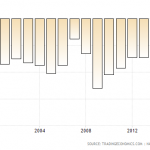“Luke, You Switched Off Your Targeting Computer — What’s wrong?” “…Nothing! I’m All Right”
I have been writing about bond market illiquidity for several years. It is just now becoming a mainstream concern. In a WSJ article, Katy Burne writes that the size of bond trades have fallen. I have told readers that it is now often easier to purchase smaller quantities of bonds and get better pricing when buying odd lots than it is buying round lots. For instance, attractive pricing in the municipal market are often for offerings in the 10m to 100m area.

In the past, dealers would buy odd lots from retail clients at depressed prices, due to their small sizes and add them to inventory. Folks on the street (like myself) would not see such attractive offerings. In fact, dealer desks would buy small sizes at deep discounts to round lots and sell retail sizes at premiums to round lots. They did this, not because they were evil, but because they needed to make “x” to make doing the trades worthwhile. Today, dealers are not holding much inventory and ECNs allow market participants to show offerings to the Street electronically. This is a very different bond market than a decade ago.
What is beneficial on the buy side is often a negative on the sell side. Trying to sell small quantities of bonds often results in receiving lower than expected pricing. However, if you plan to buy and hold, values can be found. This puts cookie-cutter SMA managers at a disadvantage. They usually have to trade bonds in large blocks. This means that they often own the most sought-after (for liquidity purposes) and richly priced bonds.
With the USD stronger and possibly rising further, it has been popular to focus on companies with little international exposure. This has caused some junk bond geeks to advocate the purchase of high yield debt issued by smaller domestically focused companies. However, it is these companies which are most vulnerable to rising rates/widening credit spreads. Therefore, they can be too risky for moderate and conservative investors. What are risk averse investors to do?















Leave A Comment